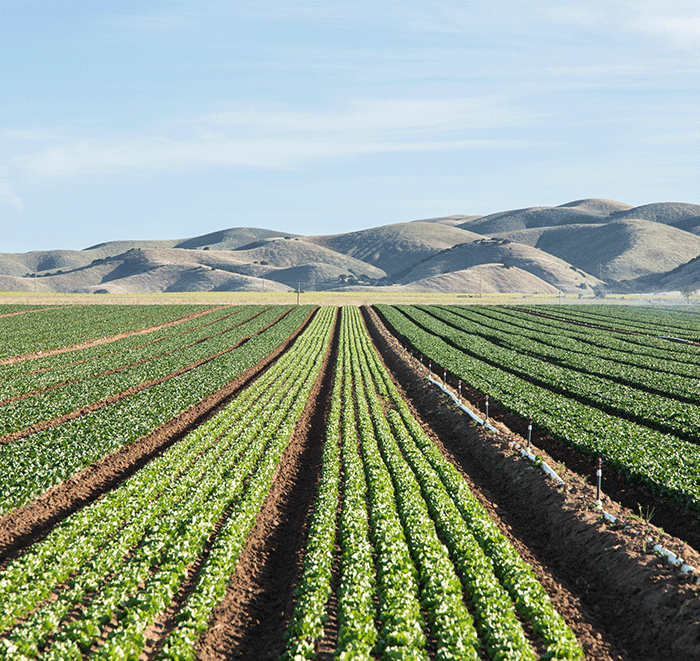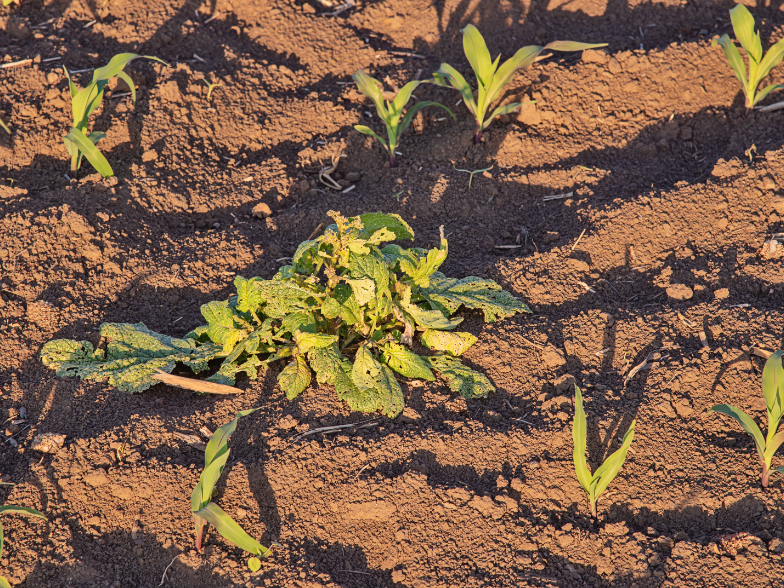Soon, summer annual weeds such as ragweed, water hemp, foxtail, and velvetleaf will emerge and actively grow in your fields. While your method of control has likely changed over the years, crop and weed competition has not changed for some time. It brings up the question, “How long can I wait to make a post-emergence herbicide application?”
Remember, the term “post-emergence” relates more to weeds than the crop! Waiting longer to make applications to summer annual weeds not only decreases the efficacy of any herbicide but also increases the chances of weed resistance beginning to develop. This year, it is possible that you may be finishing planting activities, while first-planted fields need post-emergence applications for weed control.
Potential for yield reduction involves many things, such as weed height at application, crop height at application, weed type, weed density, and weed distribution throughout the field. Planning when to make your applications can be determined mainly by the type of weeds you have present along with their density and in what crop they have occurred.
Crops compete with weeds for water, sunlight, and nutrients needed to sustain active growth. Corn competes differently than soybeans can against different species of weeds. Although dated a bit, the following is some work done from 1996 to present through the University of Nebraska Weed Science Department that addresses just this issue. Note the number of broadleaves compared to the number of grasses it takes to cause the same percentage of potential yield reduction.
This table represents the number of weeds per 100 ft2 that will cause a given yield reduction in corn.
Number of weeds per 100 ft2, causing a 1.0, 2.5, 5.0, and 10.0% yield loss in corn
| Weed | 1.0 | 2.5 | 5.0 | 10.0 |
|---|---|---|---|---|
| Barnyardgrass | 24 | 62 | 129 | 284 |
| Sandbur | 18 | 46 | 97 | 213 |
| Fall Panicum | 18 | 46 | 97 | 213 |
| Crabgrass | 15 | 37 | 78 | 170 |
| Foxtail | 7 | 19 | 39 | 85 |
| Lambsquarter
|
5 | 12 | 26 | 57 |
| Common ragweed | 5 | 12 | 26 | 57 |
| PA Smartweed | 5 | 12 | 26 | 57 |
| Russian thistle | 3 | 8 | 17 | 37 |
| Kochia | 3 | 7 | 16 | 34 |
| Pigweed | 3 | 7 | 16 | 34 |
| Waterhemp | 3 | 7 | 16 | 34 |
| Shattercane | 2 | 5 | 11 | 24 |
| Black nightshade | 2 | 5 | 11 | 24 |
| Velvetleaf | 2 | 4 | 9 | 20 |
| Cocklebur | 1 | 3 | 7 | 16 |
| Sunflower | <1 | 2 | 4 | 9 |
(University of Nebraska-Lincoln Weed Science Department. 1996)
I mentioned that corn and soybeans compete differently with any given weed species. The table above is just for corn, but you get the idea. A good rule of thumb, regardless of what herbicide you are using in corn or soybean production, is to make the application prior to broadleaves reaching 4″ in height and grasses more than 2″ in height. I realize this is easy to say and hard to accomplish based on the number of acres you need to cover. Oh, did I mention that there are always varied weed heights of the same weed species in the same field? My suggestion is to make applications prior to 4” broadleaves and 2” grass weed development so you can minimize the competitive effects (yield injury, water, nutrient utilization) the weeds are having on the developing crop. It also improves your chances of a high percentage of weed control.
Level of Weed Control
I know of no other objective, local reference for this topic than what is annually published by the Extension Weed Science group within the University of Nebraska-Lincoln Agronomy Department. The links to tables offer a wealth of information on a number of common (not all) postemergence herbicide combinations for corn and soybeans. These tables are developed via annual evaluations of these compounds for the specific weed species they are intended to control via the labeled rate, weed height, etc. Click the links below to view tables taken out of the EC130 publication. They are available online as well as at your local county extension office.
Soybeans: Broadleaf Weed Response To Postemergence Herbicides >
Corn: Broadleaf Weed Response To Foliar-Applied Herbicides >
Soybeans: Grass Weed Response To Postemergence Herbicides >
Corn: Grass Weed Response To Foliar-Applied Herbicides >
Dr. John McNamara // Wilbur-Ellis Agronomist

